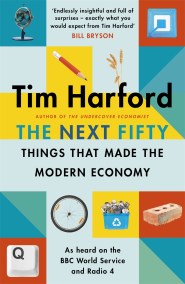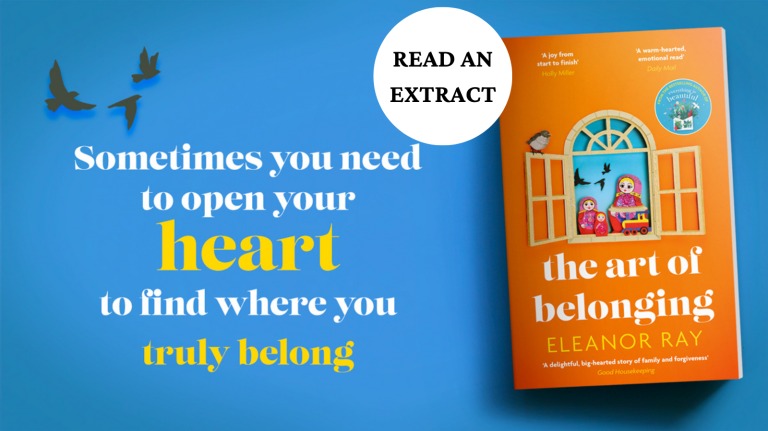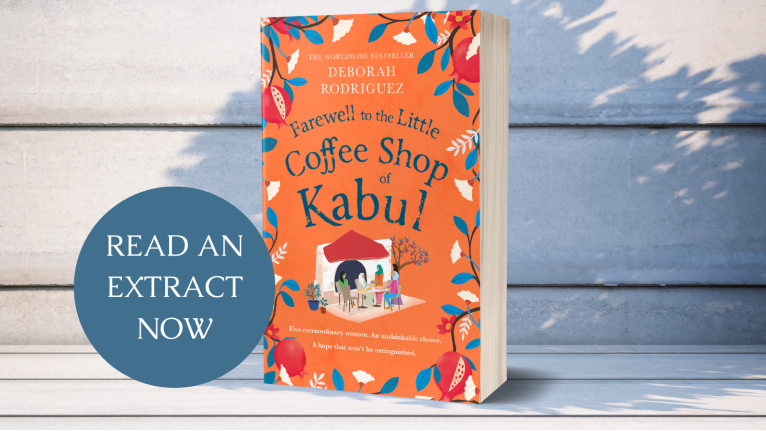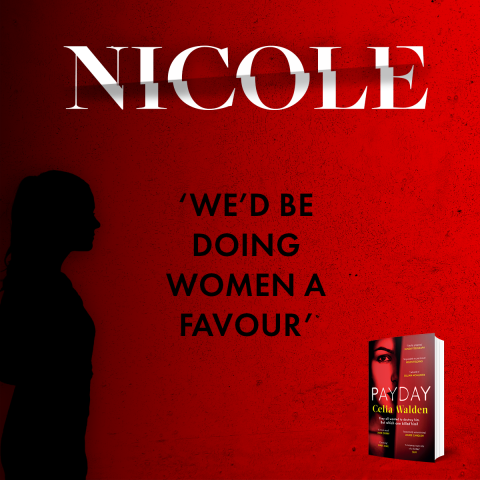The Next Fifty Things That Made the Modern Economy – fundraising appeals
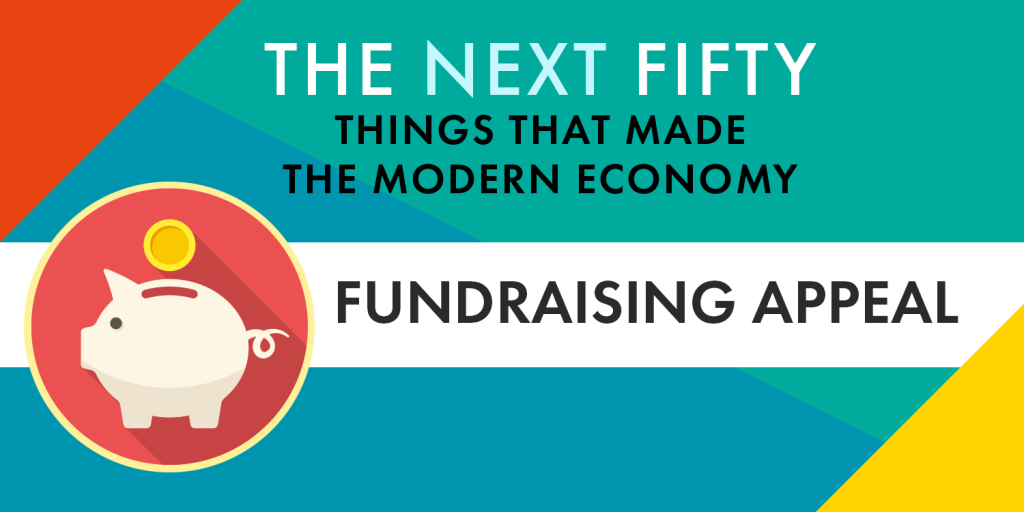
In Fifty Things that Made the Modern Economy, the revolutionary, acclaimed book, radio series and podcast, bestselling economist Tim Harford introduced us to a selection of fifty radical inventions that changed the world.
Now, in this new book, Tim Harford once again brings us an array of remarkable, memorable, curious and often unexpected ‘things’ – inventions that teach us lessons by turns intimate and sweeping about the complex world economy we live in today.
To celebrate publication, we’re sharing extracts of five of the fifty things Tim includes in his new book. Today we’re shining the spotlight on fundraising appeals.
‘It is not from the benevolence of the butcher, the brewer, or the baker that we expect our dinner,’ wrote Adam Smith, famously, in The Wealth of Nations, but from their regard to their own interest. We address ourselves, not to their humanity but to their self- love, and never talk to them of our own necessities but of their advantages.’1 But when Smith was writing in the 1770s, his mail probably didn’t include envelopes with arresting images of hungry children. When he strolled around his home town of Kirkcaldy, he was not accosted by clipboard-wielding young women trying to sign him up for a monthly donation. These days we are frequently spoken to not of our advantages, but of other people’s necessities.
Charity has become big business, though it’s hard to say how big: there’s little good data. One recent study estimates that the British, for example, donate 54 pence in every £100; that’s three times more than the Germans, but the Americans give three times more again.2 That’s also roughly what Britons spend on beer; not much less than they spend on meat; and three times what they spend on bread.3 In economic significance, the charity fundraiser is up there with the butcher, brewer and baker.
Charity, of course, is as old as humanity. The ancient religious custom of tithing – indirectly giving a tenth of one’s income to worthy causes – makes modern donations of less than a pound in every hundred seem derisory.4 Still, taxes have replaced tithes, and modern fundraisers don’t have the advantage of claiming to speak for God. They need to be professional about persuasion, and there is a man who’s regarded as the father of the field.5
His name is Charles Sumner Ward, and in the late nineteenth century he started work for the YMCA, the Young Men’s Christian Association. The New York Post described Ward as ‘a medium-sized man, so mild of manner that one would never suspect him of the power to sway hitherto reluctant pocketbook’.6 That power first gained wide attention in 1905, when his employers sent him to Washington, DC, to raise money for a new building. Ward found a wealthy donor to pledge a chunk of cash, but only if the public raised the rest; then he set an artificial deadline for this to happen. The papers lapped it up: ‘The YMCA’s Fight Against Time to Raise $50,000’, said one.7 Ward applied his methods far and wide: a target; a time limit; a campaign clock, showing progress; publicity stunts planned with military precision. In the modern world, they all seem familiar, but when Ward came to London in 1912, they were novel. The Times was suitably impressed by his ‘knowledge of human nature and an extremely shrewd application of business principles in securing the advantage at the psychological moment’.8
The First World War brought more fundraising innovations: lotteries; and flag days, which have modern equivalents in wristbands, ribbons and stickers that show you’ve given money.9 By 1924, Ward had a fundraising firm and was advertising how much it had raised for everyone from Boy Scouts to Masonic Temples; ‘Campaigns conducted on a moderate fee for service rendered’.10 For the modern heirs of Charles Sumner Ward, what counts as a ‘shrewd application of business principles’? We can get some clues from advertising executives interviewed for the Guardian. Images of starving children don’t rack up many likes on social media, they say. Build your brand instead. Engage and entertain.11
Economists have also studied what motivates donations. One theory is called ‘signalling’: we donate in part to impress other people.12 That would explain the enduring popularity of wristbands, ribbons and stickers: they display not only the causes that matter to us, but our generosity too.13 Then there’s the ‘warm glow’ theory, which says that we give in order to feel nice – or less guilty, at least. Neither theory, you may notice, discusses whether or not the charities actually work.
Experimental investigations of these ideas have produced results that are – well, a little depressing. The economist John List and colleagues sent people to knock on doors; some asked for a donation, others sold lottery tickets for the same good cause. The lottery tickets raised a lot more; no surprise there. But the researchers also found that attractive young women who asked for donations fared much better – about as well as the lottery sellers. As the study notes, dryly, ‘This result is largely driven by increased participation rates among households where a male answered the door.’14 That’s evidence for the signalling theory of altruism – and you can see exactly what kind of pretty young lady these gentlemen were keen to signal to. Another economist, James Andreoni, studied the ‘warm glow’ idea by asking what happens to private donations when a charity starts getting a government subsidy. If donors gave purely from an altruistic desire to ensure the charity can function, then the donations should move to another worthy cause when the subsidy arrives.
That doesn’t happen, which suggests we aren’t purely altruistic – we just get a warm glow from feeling that we are.15 It’s starting to sound like Adam Smith’s logic applies to charity after all. ‘It is not from the benevolence of the donor that we expect a contribution,’ a fundraiser might say, ‘but from their regard to making themselves feel good or look good to others.’ But if charities are selling a warm glow and the ability to send social signals, that doesn’t give them much incentive to do anything useful. They just have to tell us a good story.
Some people, of course, take very seriously the question of how much good charities do. There’s a movement calling for ‘effective altruism’,16 featuring organisations such as GiveWell, which studies charities’ effectiveness and recommends who deserves our cash.17 The economists Dean Karlan and Daniel Wood wondered whether evidence of effectiveness would improve fundraising. They worked with a charity to find out. Some supporters got a typical mailshot: an emotional story about an individual beneficiary, Sebastiana: ‘She’s known nothing but abject poverty her entire life . . . ’ Others got the same story, with an additional paragraph noting that ‘rigorous scientific methodologies’ attest to the charity’s impact. The results? Some people who’d previously given big donations seemed impressed, and gave more. But that was cancelled out by small donors giving less.18 Merely mentioning science seems to have punctured the emotional appeal, and lessened the warm glow.
Which may explain why GiveWell haven’t even tried to assess the household names of the charity world – the likes of Oxfam, Save The Children and World Vision. In an exasperated blog post, they explain that such charities ‘tend to publish a great deal of web content aimed at fundraising, but very little of interest for impact- oriented donors’.19 Or: ‘never talk to them of our own effectiveness’, as Adam Smith might have said.
All reference sources for this extract are below
1. Adam Smith, An Inquiry into the Nature and Causes of the Wealth of Nations (1776).
2. ‘Gross Domestic Philanthropy: An international analysis of GDP, tax and giving’, Charities Aid Foundation, January 2016, https://www.cafonline.org/docs/default-source/about-us-policy-and-campaigns/gross-domesticphilanthropy-feb-2016.pdf.
3. Author’s calculations. The UK beer market is estimated at $15.5 billion in 2019, per https://www.statista.com/outlook/10010000/156/beer/united-kingdom; meat products, $18.6 billion in 2019, per https://www.statista.com/outlook/40020000/156/meat-products-sausages/united-kingdom; bread, $4.7 billion in 2019, per https://www.statista.com/outlook/40050100/156/bread/united-kingdom. UK GDP isestimated at $2,800 billion in 2018, per https://en.wikipedia.org/wiki/Economy_of_the_United_Kingdom.
4. https://en.wikipedia.org/wiki/Tithe.
5. Adrian Sargeant and Elaine Jay, Fundraising Management: Analysis, Planning and Practice (Abingdon: Routledge, 2014).
6. Scott M. Cutlip, Fund Raising in the United States: Its Role in America’s Philanthropy (Piscataway, NJ: Transaction Publishers, 1965).
7. Cutlip, Fund Raising.
8. Sargeant and Jay, Fundraising Management.
9. Sargeant and Jay, Fundraising Management.
10. The Rotarian, October 1924, available at https://books.google.co.uk/booksid=TUQEAAAAMBAJ&pg=PA59.
11. Anna Isaac, ‘Have charity shock ads lost their power to disturb?’, Guardian, 20 April 2016, https://www.theguardian.com/voluntary-sector-network/2016/apr/20/charity-ads-shock-barnados.
12. See e.g. Amihai Glazer and Kai A. Konrad, ‘A Signaling Explanation for Charity’, American Economic Review 86.4 (September 1996): 1019–28, https://www.jstor.org/stable/2118317.
13. Geoffrey Miller, The Mating Mind: How Sexual Choice Shaped the Evolution of Human Nature (London: Vintage, 2000).
14. Craig Landry, Andreas Lange, John A. List, Michael K. Price and Nicholas G. Rupp, ‘Toward an Understanding of the Economics of Charity: Evidence from a Field Experiment’, East Carolina University, University of Chicago, University of Maryland, University of Nevada-Reno, NBER and RFF, 2005, http://www.chicagocdr.org/papers/listpaper.pdf#search=%2522towards%20an%20understanding%20of%20the%20economics%20of%20charity%2522.
15. James Andreoni, ‘Impure Altruism and Donations to Public Goods: A Theory of Warm Glow Giving’, Economic Journal 100.401 ( June 1990): 464–77, available at https://econweb.ucsd.edu/~jandreon/Publications/ej90.pdf.
16. ‘Introduction to Effective Altruism’, Centre for Effective Altruism, 22 June 2016, https://www.effectivealtruism.org/articles/introduction-to-effectivealtruism/.
17. https://givewell.org.
18. Dean Karlan and Daniel Wood, ‘The Effect of Effectiveness: Donor Response to Aid Effectiveness in a Direct Mail Fundraising Experiment’, Economic Growth Center Discussion Paper No. 1038, 2015.
19. ‘Mega-charities’, The GiveWell Blog, 28 December 2011, https://blog.givewell.org/2011/12/28/mega-charities/.

